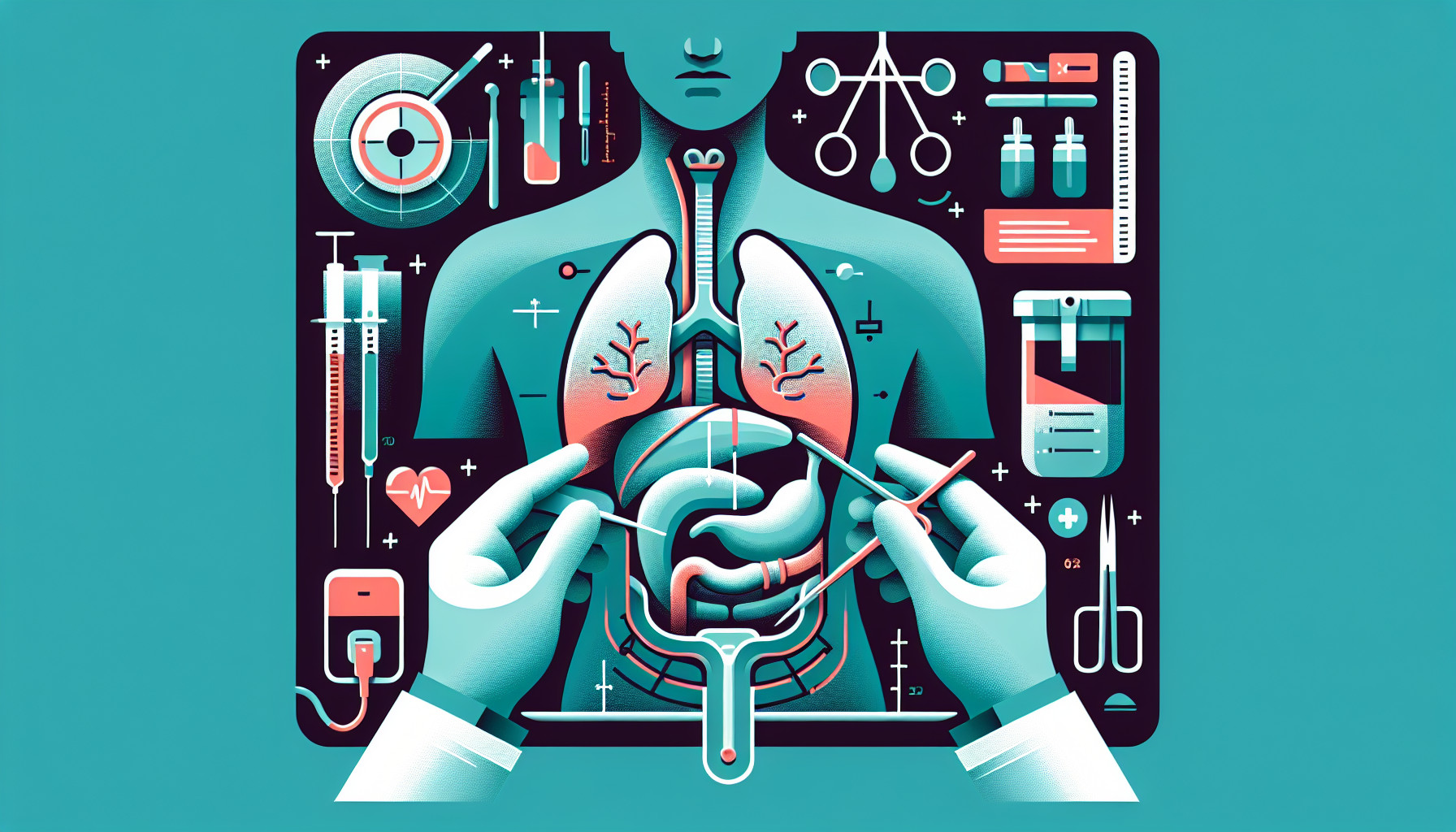Our Summary
This research paper discusses a rare complication that occurred in a patient who had received both a pancreas and kidney transplant. 15 years after the operation, the patient developed reflux pancreatitis and a pancreatic pseudocyst, which is a type of fluid-filled sac that forms in the pancreas. This was because of a condition called neuropathic bladder, which affects bladder control. The doctors first tried to manage the condition by draining the pseudocyst and placing a Foley catheter, a tube, into the patient’s bladder to help it empty. However, the pseudocyst came back after the drains and catheter were removed. In the end, the patient had to undergo a surgical procedure known as enteric conversion of the pancreas allograft, which successfully resolved the symptoms and got rid of the pseudocyst. The researchers conclude that this surgical procedure should be considered for similar cases in the future.
FAQs
- What is a pancreatic pseudocyst and how often does it occur after a pancreas transplant?
- What is the suggested treatment for a recurrent pseudocyst after a pancreas transplant?
- Can you explain what an enteric conversion of the pancreas allograft is and why it was necessary in this case?
Doctor’s Tip
Helpful tip: If you experience symptoms of reflux pancreatitis or develop a pancreatic pseudocyst after a pancreas transplant with bladder exocrine drainage, it is important to consult with your healthcare provider. They may recommend a procedure called enteric conversion to help resolve these complications. It is important to follow your doctor’s recommendations and attend regular follow-up appointments to monitor your progress post-transplant.
Suitable For
Patients who are typically recommended for pancreas transplant include those with type 1 diabetes who have significant complications from their disease, such as frequent severe hypoglycemia, diabetic nephropathy requiring kidney transplant, or difficulty managing blood glucose levels. These patients may benefit from a pancreas transplant to improve their quality of life and reduce the risk of long-term complications associated with diabetes. Additionally, patients with type 1 diabetes who are already undergoing kidney transplant may also be considered for simultaneous pancreas and kidney transplant to address both conditions at once.
Timeline
Before pancreas transplant:
- Patient undergoes evaluation for transplant candidacy, including medical history, physical examination, blood tests, imaging studies, and psychological assessment.
- Patient is placed on the transplant waiting list and waits for a suitable donor organ to become available.
- Patient undergoes pre-transplant procedures, such as dialysis for kidney failure if applicable, and may need to make lifestyle changes to improve overall health and increase chances of a successful transplant.
After pancreas transplant:
- Patient undergoes surgery to receive the pancreas transplant, which may also include a kidney transplant if needed.
- Patient is monitored closely in the hospital for complications and to ensure the transplanted organ is functioning properly.
- Patient may need to take immunosuppressive medications to prevent rejection of the transplanted organ.
- Patient undergoes regular follow-up appointments with healthcare providers to monitor organ function, adjust medications, and address any complications that may arise.
- In cases where complications such as pancreatic pseudocysts occur, additional interventions such as percutaneous aspiration and drainage or enteric conversion may be necessary to manage the condition and improve symptoms.
What to Ask Your Doctor
- What are the potential complications of a pancreas transplant, including pancreatic pseudocysts?
- How common is the development of pancreatic pseudocysts in patients who have undergone a pancreas transplant?
- What are the symptoms of reflux pancreatitis and pancreatic pseudocysts that I should be aware of?
- How is reflux pancreatitis and pancreatic pseudocysts typically diagnosed in patients who have undergone a pancreas transplant?
- What are the treatment options for reflux pancreatitis and pancreatic pseudocysts in patients who have undergone a pancreas transplant?
- What is the success rate of enteric conversion in resolving symptoms and pseudocysts in patients with bladder-drained pancreas transplants?
- Are there any long-term implications or risks associated with enteric conversion of a pancreas transplant?
- What is the recovery process like after undergoing enteric conversion for reflux pancreatitis and pancreatic pseudocysts?
- Are there any lifestyle changes or medications that I should be aware of following enteric conversion to prevent recurrence of symptoms and pseudocysts?
- How often should I follow up with my healthcare provider after undergoing enteric conversion for reflux pancreatitis and pancreatic pseudocysts?
Reference
Authors: Yadav K, Stern J, Cholyway R. Journal: Transplant Proc. 2020 Nov;52(9):2831-2834. doi: 10.1016/j.transproceed.2020.08.005. Epub 2020 Aug 25. PMID: 32859403
